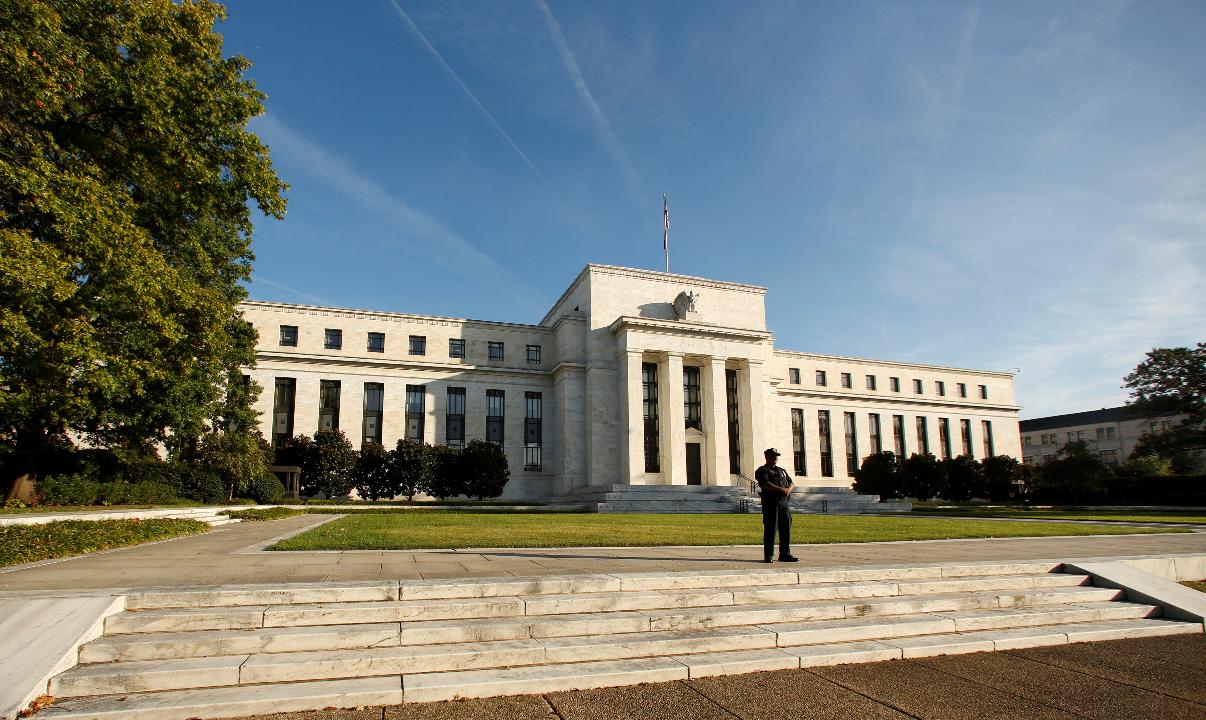Fed minutes dampen expectations for faster rate hikes
Federal Reserve officials raised their economic outlook in January but remained skeptical that wage growth will rise faster than expected, according to minutes from the central bank’s latest policy meeting.
Higher inflation has become a focal point on Wall Street amid investor concerns that wages are heating up faster than Fed policymakers anticipated. In a statement following its January meeting, the Federal Open Market Committee said it sees “further” interest rate hikes in 2018. Investors viewed that statement as a sign that Fed officials are considering more rate increases than planned. But in the minutes released Wednesday, the Fed appeared to be less hawkish.
The Fed said “a number of participants” believed that continued strength in the labor market will likely translate into “faster wage increases at some point,” though the current inflation outlook remained largely unchanged.
“While some participants heard more reports of wage pressures from their business contacts over the intermeeting period, participants generally noted few signs of a broad-based pickup in wage growth in available data,” the minutes read.
U.S. stocks added to their gains following the news, with the Dow climbing over 200 points.
Tom Essaye, founder of The Sevens Report, said the market was relieved that the Fed minutes dampened fears of an accelerated timetable for rate hikes. It’s important to note, however, that the Fed convened before new economic data suggesting a possible pickup in inflation.
“You have to take [the minutes] with a grain of salt, but the market is happy that the Fed was not hawkish,” Essaye said.
The Fed has indicated that it will raise rates three times in 2018, though recent signs of inflation growth have raised the odds on Wall Street that a fourth increase is possible.
Two days after the January meeting concluded, the Labor Department revealed that hourly wages during the month jumped at an annualized pace of 2.9%, the fastest growth rate since April 2009. Rising consumer prices also fueled expectations that inflation is heating up. The Consumer Price Index gained 0.5% in January, more than economists’ average estimate.
The Fed is calling for inflation to edge higher in 2018 and stabilize around its 2% target.
In anticipation of higher interest rates, investors have sold off government debt. The benchmark 10-year Treasury yield has swiftly moved closer to the 3% mark, recently hitting a four-year high of roughly 2.9%. The yield on the two-year Treasury note, which is more sensitive to Fed policy, has reached its highest level in nearly a decade. Yields rise as bond prices fall.
Investors will soon turn their attention to the Fed’s March meeting, which will precede the first press conference with new Fed Chair Jerome Powell. The transition to Powell from Janet Yellen, who recently concluded her tenure as the Fed’s top official, has left investors feeling somewhat uncertain about the future of monetary policy. During his confirmation hearing in front of a Senate committee, Powell indicated that he would back the gradual rate hikes spearheaded by Yellen. Questions related to Powell’s stewardship of the Fed remain, especially given recent signs of inflation growth and volatility in the stock market.
“The market is trying to figure out what Fed policy is going to be going forward,” Essaye said. “Everyone assumes that Powell is Yellen 2.0. Is the Fed on a preset course, and they’ll hike rates only as much as they telegraph, or are they going to be more aggressive? We just don’t know the answer.”




















